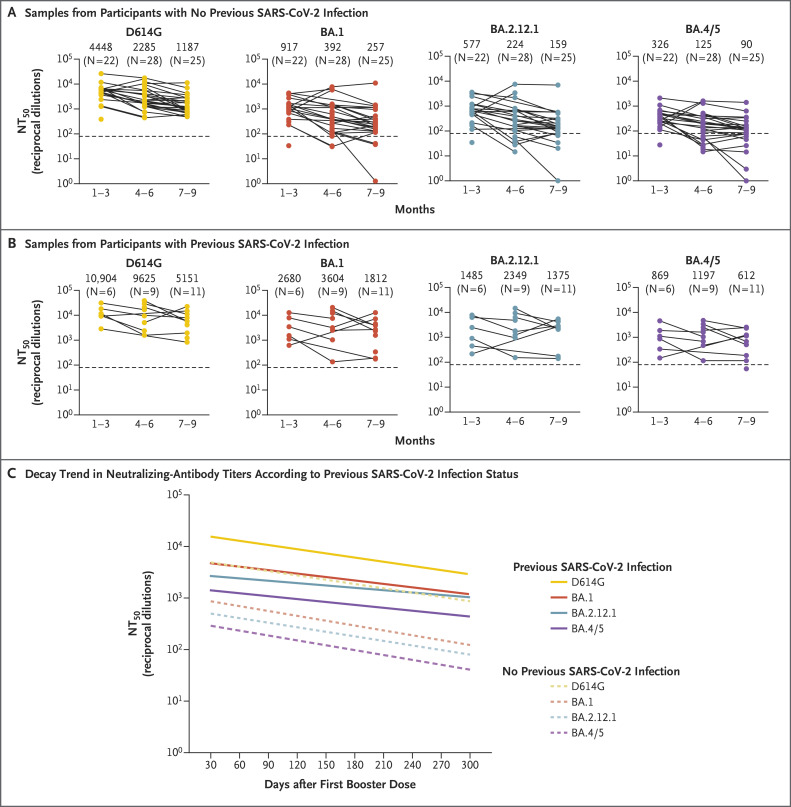Figure 1. Durability of mRNA Booster–Induced Neutralizing Antibodies According to Previous SARS-CoV-2 Infection.
Panel A shows neutralizing-antibody titers against virus pseudotyped with spike protein from the ancestral severe acute respiratory syndrome coronavirus 2 (SARS-CoV-2) with the D614G mutation and the B.1.1.529 (omicron) subvariants BA.1, BA.2.12.1, and BA.4 and BA.5 (hereafter, BA.4/5) in serum samples obtained from health care workers with no previous SARS-CoV-2 infection. Samples were obtained from participants who had received a booster dose of messenger RNA (mRNA) vaccine 1 to 3 months, 4 to 6 months, or 7 to 9 months previously. Neutralizing-antibody titers against virus with the D614G mutation and the omicron subvariants BA.1, BA.2.12.1, and BA.4/5 in serum samples obtained from participants with previous SARS-CoV-2 infection are shown in Panel B; samples were obtained according to the same time categories as in Panel A. In both panels, dots represent individual samples, and the horizontal dashed lines represent the limit of detection. Solid lines connect samples that were obtained from the same participant. Geometric mean values for the 50% neutralization titers (NT50) are shown at the top of the plots for each time point. Panel C shows the trend lines in neutralizing-antibody decay over the study period as determined by linear mixed-effects modeling with accounting for repeated measures in participants with no previous SARS-CoV-2 infection against virus with the D614G mutation (slope, −0.0028; 95% CI, −0.0037 to −0.0018) or subvariants BA.1 (slope, −0.0031; 95% CI, −0.0048 to −0.0015), BA.2.12.1 (slope, −0.0030; 95% CI, −0.0045 to −0.0014), or BA.4/5 (slope, −0.0032; 95% CI, −0.0047 to −0.0016) and in participants with previous SARS-CoV-2 infection against virus with the D614G mutation (slope, −0.0027; 95% CI, −0.0050 to −0.0004) or subvariants BA.1 (slope, −0.0022; 95% CI, −0.0054 to −0.0010), BA.2.12.1 (slope, −0.0015; 95% CI, −0.0047 to −0.0016), or BA.4/5 (slope, −0.0019; 95% CI, −0.0047 to −0.0010). The 95% confidence intervals for each trend-line slope have not been adjusted for multiplicity and should not be used in place of hypothesis testing.

